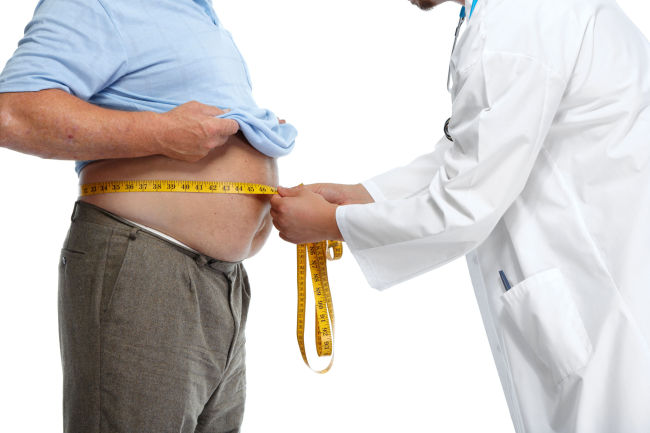Obesity report shows difference between men, women according to wealth level
By YonhapPublished : Dec. 31, 2017 - 14:37
Some 41 percent of adult men are overweight, much higher than 24 percent for women, according to an obesity report out Sunday that showed the correlation between body size and income level.
The report was released by the National Health Insurance Service (NHIS) based on 13.95 million people who received medical checkups last year.
Results showed that 41.28 percent of men and 23.74 percent of women were overweight, meaning their body mass index exceeds 25.

According to the findings, 29.99 percent of the men were in the normal weight range. The number compares with 25.64 percent who were overweight, 35.74 percent who were moderately obese and 5.31 percent who were severely obese.
Among men in their 30s, 46.26 percent were above the normal range of 23 in their BMI.
For women, 50.03 percent were in the normal weight category.
Underweight women numbered 7.78 percent, compared with 2.05 percent for men. Those who were overweight came to 18.33 percent, moderately obese 19.54 percent and severely obese 3.59 percent.
The report had measured obesity level in relation to the state health insurance payments, with results indicating that while wealthier men tended to weigh more, it was the opposite for women.
State health insurance payments go up with higher income and/or wealth.
Among men, the obesity level increased as the insurance payment amounts got higher. For instance, the obesity level was the highest at 37.36 percent in the second-highest insurance payment group.
For women, however, the obesity level rose opposite to their insurance payments. The report showed that the highest number of obese women at 21.79 percent were in the lowest insurance payment group.
When it came to severely and very severely obese, both men and women had low income and/or wealth.
"The expected results were that the obesity level would have a U-shape, because generally speaking, people with higher income would be more obese from consuming fatty foods and those in the low income group gain weight from eating instant and fast foods," an official from NHIS said.
"But the big data analysis indicates that obesity shows up differently between men and women depending on income level." (Yonhap)











![[Today’s K-pop] BTS pop-up event to come to Seoul](http://res.heraldm.com/phpwas/restmb_idxmake.php?idx=644&simg=/content/image/2024/04/17/20240417050734_0.jpg&u=)





![[KH Explains] Hyundai's full hybrid edge to pay off amid slow transition to pure EVs](http://res.heraldm.com/phpwas/restmb_idxmake.php?idx=652&simg=/content/image/2024/04/18/20240418050645_0.jpg&u=20240418181020)

![[Today’s K-pop] Zico drops snippet of collaboration with Jennie](http://res.heraldm.com/phpwas/restmb_idxmake.php?idx=642&simg=/content/image/2024/04/18/20240418050702_0.jpg&u=)